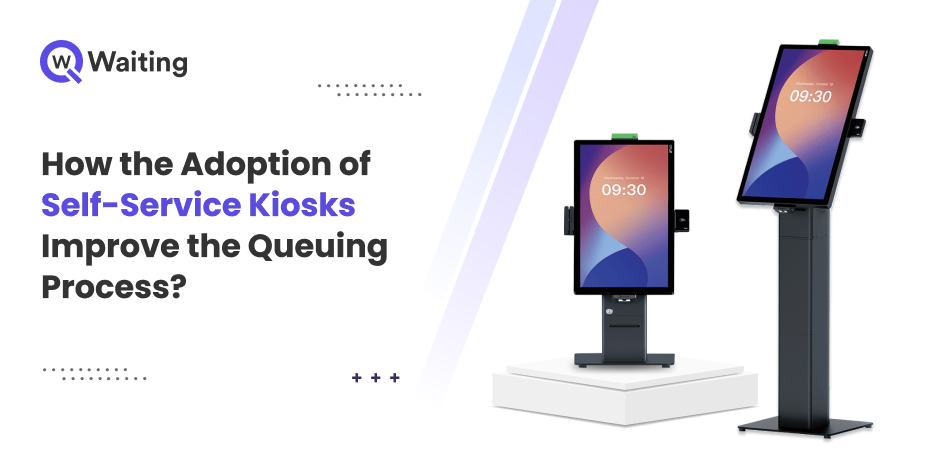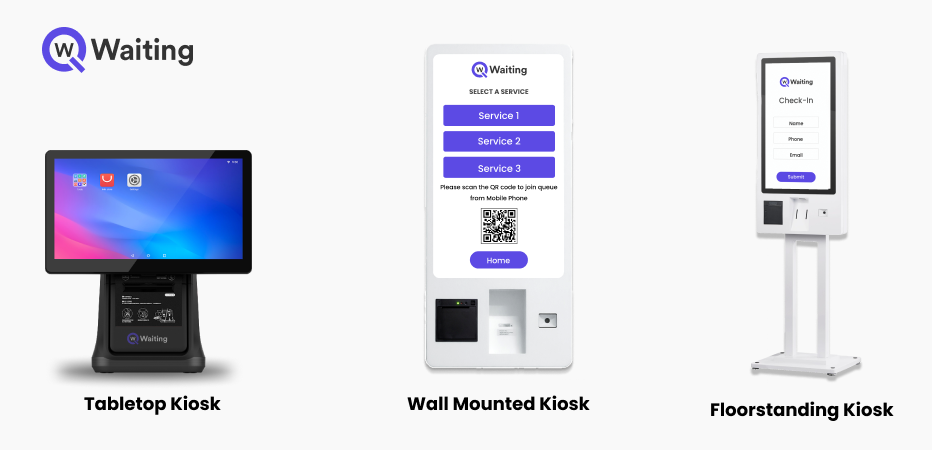
The use of self-service kiosks represents an important step forward to improve the queuing process in multiple industries. For example- retail, banking, healthcare, & more. These kiosks empower customers to independently place orders, or check in. This results in increased operational efficiency & a positive customer experience. The shift towards self-service technology addresses important aspects of queue management by improving service delivery, reducing wait times, & enhancing overall satisfaction. In this blog, we will explore how the implementation of Self-service Kiosks makes the better queuing process.
Advantages of Using the Interactive Kiosk Solutions
The following are the benefits of integrating the Self-service Kiosks software in your business premises.
Customer Empowerment
Interactive kiosks empower customers with self-service options where customers can independently fill in the information on the screen. This helps them easily generate tickets to avail of the service and further eliminates the need for staff to sit all the time on the counter.
Faster Service
Self-service kiosks enable customers to independently complete transactions. This significantly reduces the time spent waiting in line. Thus, this leads to faster service & helps to manage high-traffic areas.
Minimise Staff Workload
Routine and repetitive tasks can be offloaded to kiosks, which allows human staff to focus on more complex & personalized customer interactions. This reduces staff workload and enhances their productivity.
Secure Customer Data
Interactive kiosks mainly come with advanced security features to protect customer data. Transactions are encrypted, which ensures a secure environment for customers to input sensitive information.
Reduce Operational Costs
Automated processes through kiosks may lead to significant cost savings by reducing the need for additional staff members in certain areas. Besides, they can operate 24/7 without the need for breaks.
Brand Awareness
Kiosks serve as an additional channel for brand promotion. Businesses may use interactive displays to showcase products, promotions, & other marketing materials, which increases brand visibility.
Integration
Interactive kiosk solutions can integrate with existing business systems and databases, providing real-time access to information. This integration enhances the overall efficiency of operations and ensures consistency across various touchpoints.
Why you Should Go for a Qwaiting Self-service Kiosk?

As we prioritize the environmental needs of different premises, each environment demands distinct types of kiosks. Opting for a Qwaiting self-service kiosk, whether wall-mounted, floor-standing, or desktop, provides multiple advantages for businesses looking to enhance customer service, simplify operations, & improve overall efficiency. The following are reasons why you should consider each type:
Wall mounted Kiosk
Our wall-mounted touch kiosk features a modern design & occupies minimal space once set up. It enables customers to check themselves in and get a ticket for the queue. It also has automatic barcode and QR code recognition for easy interaction.
- Visibility & Accessibility: Positioned at eye level, wall-mounted kiosks ensure easy visibility and accessibility for Customers. This can be particularly beneficial in crowded or high-traffic areas.
Floor standing Kiosk
The floor-standing kiosk is a secure solution with a stylish design and advanced features. It can be fixed to the floor securely to prevent unauthorized movement. Optional features like a tablet for self-checkout are also available to meet different needs and provide users with a personalized experience.
- Branding: Larger screens on floor-standing kiosks provide an opportunity for superior branding and content display, which is useful for effective business marketing.
Tabletop Kiosk
Our tabletop kiosk stands out as the most user-friendly model, featuring a thermal printer and a glass-fronted touchscreen. Visitors can easily choose their preferred service upon arrival. Designed for continuous operation in busy locations, it can be conveniently placed on a table or desk.
- Employee Assistance: Tabletop kiosks can be used by staff to assist customers, offering a collaborative approach that combines self-service convenience with human support. They are suitable for scenarios where a one-on-one interaction or privacy is required, such as in healthcare or financial service locations.
Self-service Kiosks In Multiple Industries
Kiosk In Supermarket

Self-service kiosks manage customer traffic to your retail stores by providing a quick and convenient way to get services on their own. It helps to improve service organization, simplify service processes, and get rid of traditional lines in your supermarket.
Self-registration Kiosk In Hospitals
Self-service machines allow patients to pre-book appointments to easily check in, cancel, or reschedule appointments, update their patient information, and schedule their next visit before they leave.
Kiosk In Restaurants
Self-service kiosks allow customers to skip lines, reduce wait times, and avoid direct staff interaction. Customers can use the kiosk to check in and select their order on a touchscreen, pay with a card, or any other payment getaway. Then, they can simply wait for their food to be made and it simply sends a notification to them and displays a unique token number on the screen that the order is ready.
Kiosk In Banks
Self-service kiosks help to enhance your customer experience & convenience in the banking sector. It automates the check-in process, where customers can self sign-in to avail of the financial services rather than standing in long queues and waiting for long hours.
Concluding Remarks
To conclude, customer service and satisfaction are important for a business’s reputation. Self-service kiosks help improve profitability, automate tasks, speed up processes, & empower customers to do things on their own.
